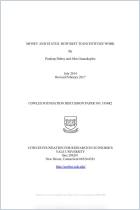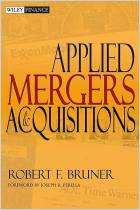
Which Banks Are More Risky?
The Impact of Loan Growth and Business Model on Bank Risk-Taking
Read or listen offline
Recommendation
Matthias Köhler, an economist at the Deutsche Bundesbank, observes that even though recent economic crises have affected the entire banking industry in the European Union, these crises haven’t affected every EU bank in the same way. With all the chaos that the crises caused the industry, Köhler says prudent banks should analyze their models and shift to profit-making schemes with more stability and less risk. Köhler canvasses a large sample of banks and their transactions, changing his analytical formulas to include a broader range of variables and relationships. His approach doesn’t reveal anything too surprising, but it does contradict some commonly held axioms about banks, their funding and their business models. Köhler writes more clearly and accessibly than most other economists, although his report is understandably replete with econometric formulas, statistical regressions and mathematical modeling. getAbstract recommends his study to bank executives, economists and risk professionals in the European Union and elsewhere.
Take-Aways
About the Author
Matthias Köhler conducts research on financial stability and banking structure at the Deutsche Bundesbank.
















Comment on this summary or Comenzar discusión